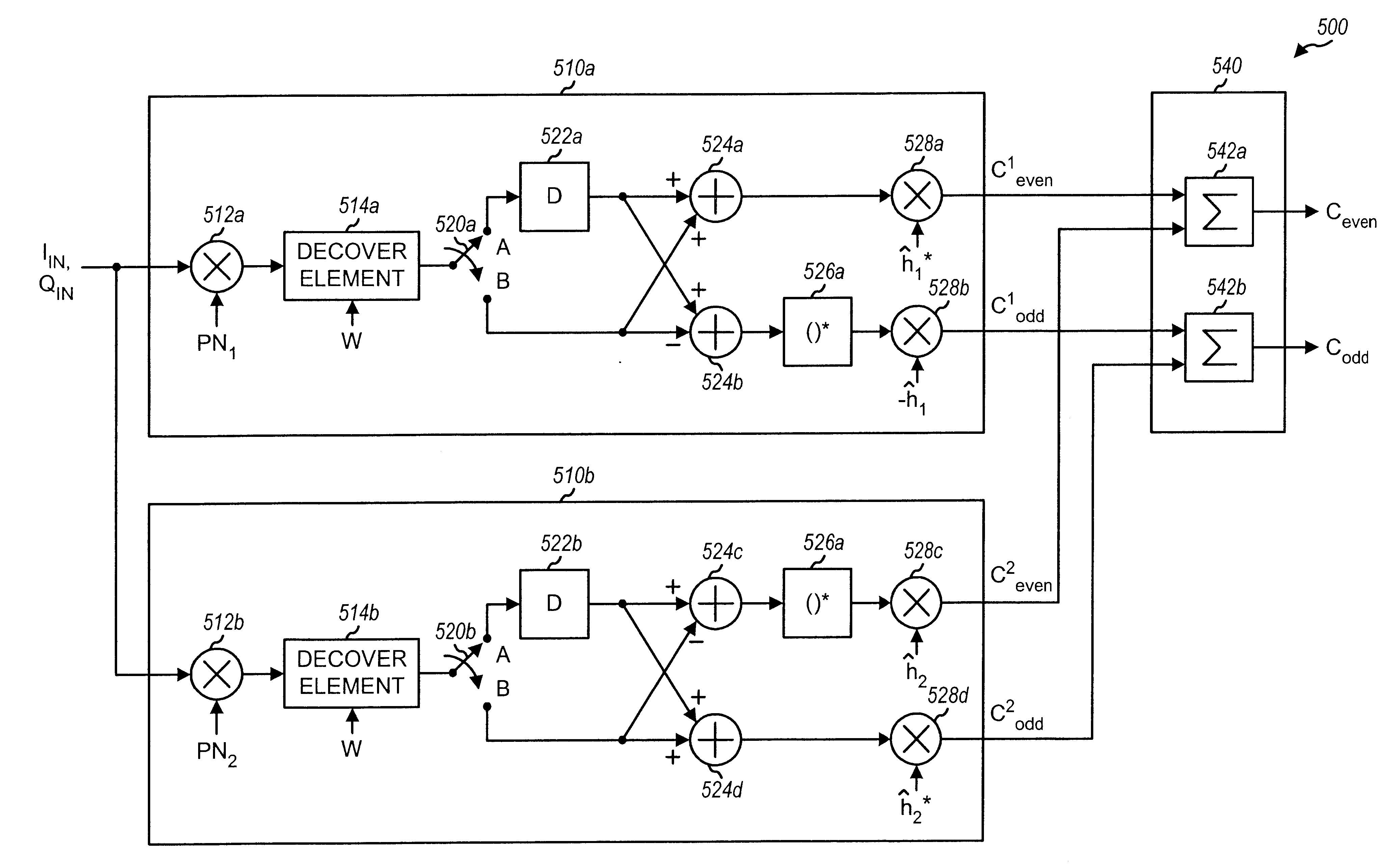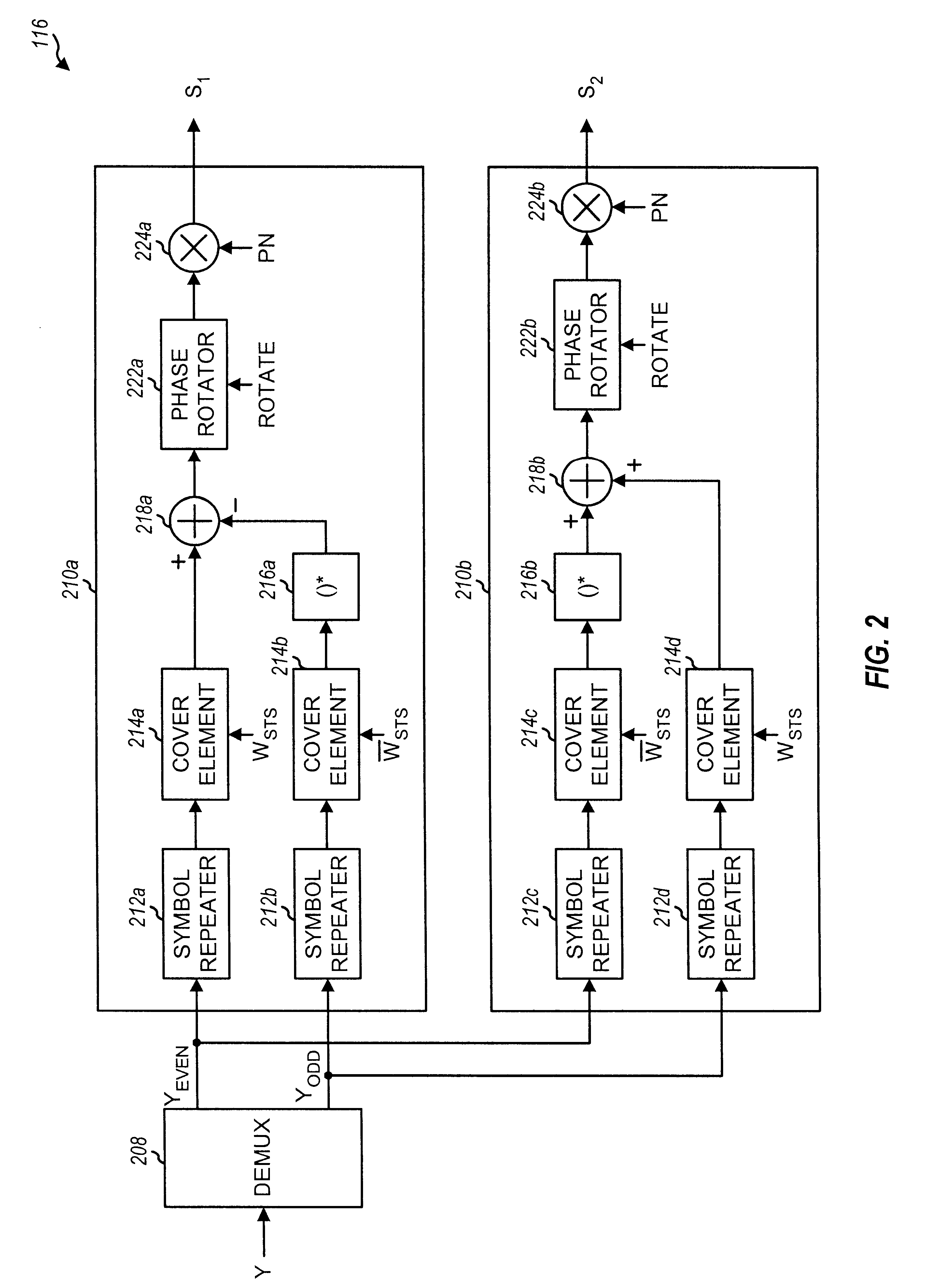Method and apparatus for demodulating signals processed in a transmit diversity mode
a technology of transmit diversity and demodulation, applied in diversity/multi-antenna systems, multi-frequency code systems, multi-frequency communication, etc., can solve the problems of complex signal processing, multiple instances of such signals, and user terminals that are typically more impacted by complexity and cost considerations
- Summary
- Abstract
- Description
- Claims
- Application Information
AI Technical Summary
Benefits of technology
Problems solved by technology
Method used
Image
Examples
Embodiment Construction
FIG. 1 is a simplified block diagram of an embodiment of a communications system 100 in which the present invention may be implemented. At a transmitter unit 110, traffic data is sent, typically in frames or packets, from a data source 112 to a transmit (TX) data processor 114 that formats, encodes, and processes the data. TX data processor 114 typically further processes signaling and pilot data, which is then combined (e.g., added, or time division multiplexed) with the processed traffic data to generate composite data. A modulator (MOD) 116 then receives, channelizes (i.e., covers), and spreads the composite data to generate symbols that are then converted to analog signals. The analog signals are filtered, (quadrature) modulated, amplified, and upconverted by a transmitter (TMTR) 118 to generate one or more modulated signals, which are then transmitted via respective antennas 120 to one or more receiver units.
At a receiver unit 130, the transmitted signals are received by an ant...
PUM
 Login to View More
Login to View More Abstract
Description
Claims
Application Information
 Login to View More
Login to View More - R&D
- Intellectual Property
- Life Sciences
- Materials
- Tech Scout
- Unparalleled Data Quality
- Higher Quality Content
- 60% Fewer Hallucinations
Browse by: Latest US Patents, China's latest patents, Technical Efficacy Thesaurus, Application Domain, Technology Topic, Popular Technical Reports.
© 2025 PatSnap. All rights reserved.Legal|Privacy policy|Modern Slavery Act Transparency Statement|Sitemap|About US| Contact US: help@patsnap.com



